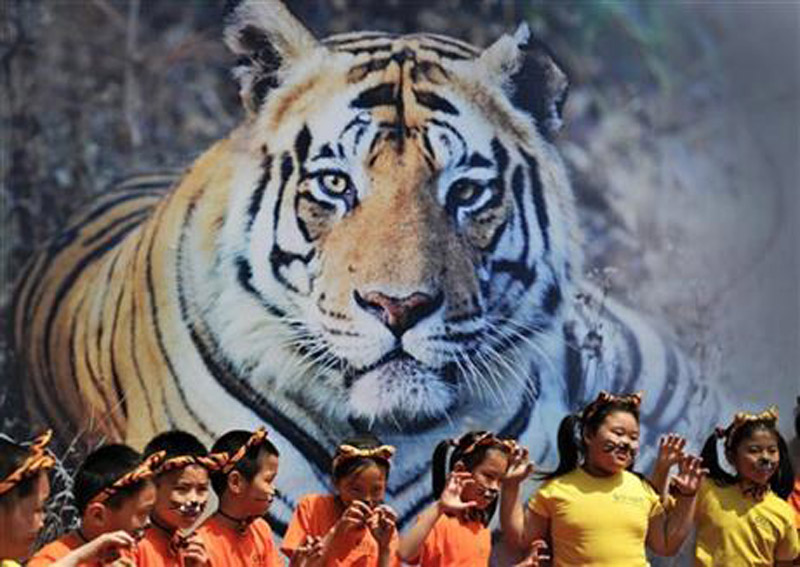-
Tips for becoming a good boxer - November 6, 2020
-
7 expert tips for making your hens night a memorable one - November 6, 2020
-
5 reasons to host your Christmas party on a cruise boat - November 6, 2020
-
What to do when you’re charged with a crime - November 6, 2020
-
Should you get one or multiple dogs? Here’s all you need to know - November 3, 2020
-
A Guide: How to Build Your Very Own Magic Mirror - February 14, 2019
-
Our Top Inspirational Baseball Stars - November 24, 2018
-
Five Tech Tools That Will Help You Turn Your Blog into a Business - November 24, 2018
-
How to Indulge on Vacation without Expanding Your Waist - November 9, 2018
-
5 Strategies for Businesses to Appeal to Today’s Increasingly Mobile-Crazed Customers - November 9, 2018
Wild tiger population is rising
The new figure of tiger population is based on the results of latest national tiger surveys and data from the International Union for Conservation of Nature.
Advertisement
Tigers are classified as endangered by the IUCN Red List of Threatened Species, threatened by poaching and habitat loss and statistics from TRAFFIC, the wildlife trade monitoring network, show that a minimum of 1,590 tiger skins were seized by law enforcement officials between January 2000 and April 2014, feeding a multi-billion dollar illegal wildlife trade.
“The good thing is, most of those countries have committed to doing those surveys over the next year or so, so that will enlighten us to a more accurate figure and hopefully show that that overall number is increasing further”.
Conservation efforts in Russia, India, Nepal and Bhutan have been credited with the rise in numbers.
WWF International director general Marco Lambertini said: “For the first time after decades of constant decline, tiger numbers are on the rise”.
Bangladesh registered a severe decline from 440 tigers in 2010 to 106 in 2015, though conservationists say this may have been due to an over-estimation of the population six years ago.
In 2010 there were just 3,200 tigers in the wild.
WWF urged tiger-range governments to release the number of the wild animal population, saying that they should know the threats they face first. Habitat destruction and fragmentation, poaching and the use of tiger parts in traditional Chinese medicine have put tigers on the brink of extinction. Developed countries are also rapidly shrinking their habitats.
This conference is being co-organized by Ministry of Environment, Forest and Climate Change, National Tiger Conservation Authority, Global Tiger Forum, Global Tiger Initiative Council, Wildlife Institute of India, WWF and Wildlife Conservation Trust.
“More important than the absolute numbers is the trend, and we’re seeing the trend going in the right direction”, said Ginette Hemley, senior vice president of wildlife conservation at WWF. More than 700 tiger experts, scientists, managers, donors and other stakeholders are gathering to discuss issues related to tiger conservation. Over the three day meeting, countries will report on their progress toward the Tx2 goal and commit to next steps. In Nepal, our efforts have produced one of the greatest areas of progress in tiger conservation, which is helping drive this global increase in population.
Advertisement
India alone holds more than half of them, with 2,226 tigers roaming reserves across the country, from the southern tip of Kerala state to the eastern swamps in West Bengal, according to its last count in 2014.




























